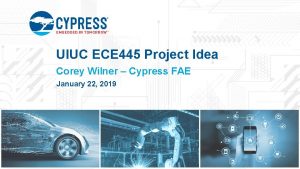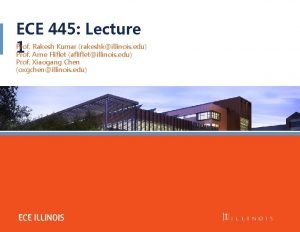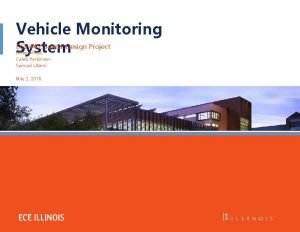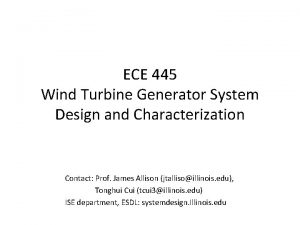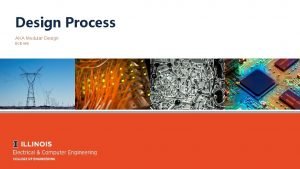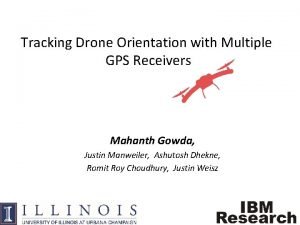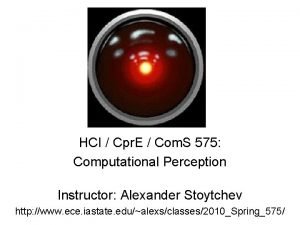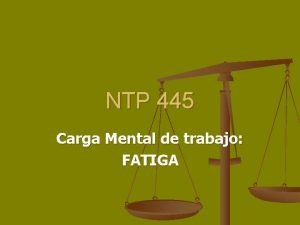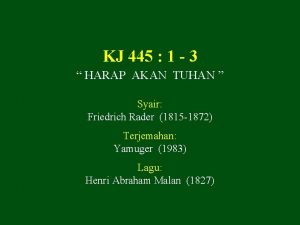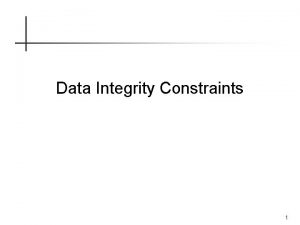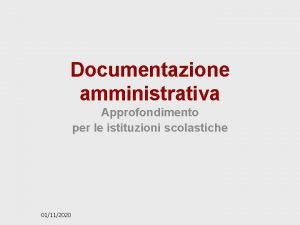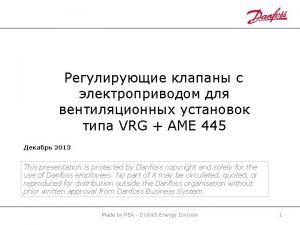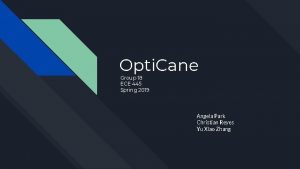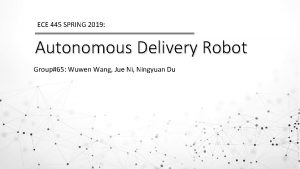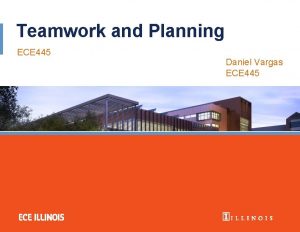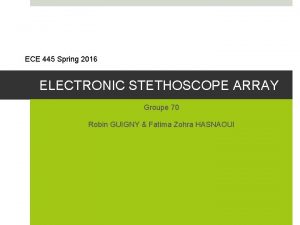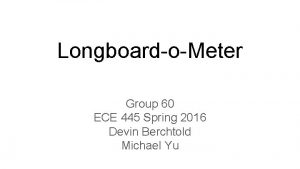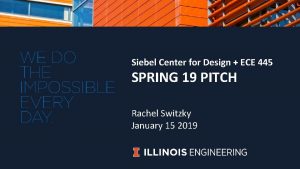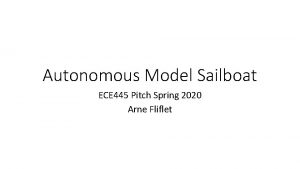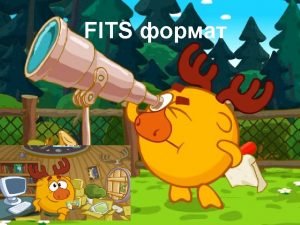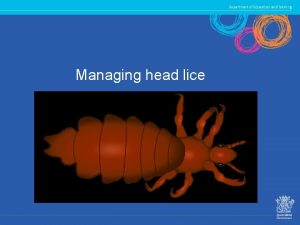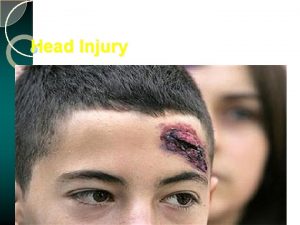ECE 445 Spring 2019 Head Orientation Tracking Module























- Slides: 23

ECE 445 Spring 2019 - Head Orientation Tracking Module for Headphones Group 46 Molly Fane, Sally Zhou, Cary Zhu

Introduction ● Worked with Professor Eli Fieldsteel, Director of Experimental Music Studios ● Deliver a more immersive and realistic audio experience ○ Make it feel as though the sound is coming from fixed positions in a room despite moving your head

Objective ● A device capable of ○ Attaching to any pair of over-the-ear headphones ○ Communicating accurate data about the orientation of the head back to computer ● Orientation: roll, pitch, yaw

Physical Diagram


PCB Indicator LED’s Sensor Chip & Peripherals Bluetooth Connections Bluetooth Module Battery Connector Jack 3. 3 v Regulator 5 v Regulator ATMega 2560 Chip Test Points for Code Upload

PCB Design: Extra Features ● EAGLE used to design PCB ● Schottky Diodes on USB and 9 V power supplies. ● Test points ● Power LED ● Status LED ● USB and Bluetooth breakout boards.

Power Unit ● Battery: 9 V Battery (5% Tolerance) ● Regulators ○ The regulators take 9 volts from battery to produce 5± 0. 5 V and 3. 3± 0. 3 V ○ Capable of delivering 0. 501 A for 3. 3 V ○ Capable of delivering 0. 50 m. A for 5 V

Power Unit Schematic

Computational Unit: Microcontroller ● Drives accelerometer, magnetometer to produce orientation ● Used ATmega 2560 Chip ● Drives Bluetooth controller ● Programmed using USB breakout board

Computational Unit: Bluetooth Transceiver ● Sustains connection with computer for a minimum 5 meters away ● Returns data at 9600 Baud (50 Hz framerate for 3 float-64 values) ● Accessed through serial connection within Super. Collider or through a Pu. TTY Terminal

Sensor Unit ● Accelerometer ○ Records 3 -axis acceleration data ● Magnetometer ○ Records 3 -axis magnetic north data ● Used LSM 303 ● Communicate ≥ 30 Hz (fastest 5. 376 k. Hz)

Sensor Unit - Tilt Compensated Heading ● Accelerometer outputs gravity vector: (G 1, G 2, G 3) ● Magnetometer outputs Magnetic North vector: (N 1, N 2, N 3) ● Trigonometry

Sensor Unit - Magnetometer Calibration

Software: Algorithm ● Calibration Weights and Offsets ● Low-pass filter ○ 2 tap weighted average ● Tilt Compensated Heading Calculation ● Bluetooth communication ○ On/Off with LED status ○ Reset front direction

Software: Front Calibration ● Yaw is calibrated using the current “front” orientation Updated_Yaw = mod(Sensed_Yaw - Front_Yaw, 2π) ● Subtract yaw from instance front reset trigger is pressed from all later yaw calculations ● Modulo 360°

Software: Super. Collider Integration ● Platform for audio synthesis and algorithmic composition

Challenges ● PCB Assembly ○ Sensor chip ○ Small capacitors ○ Lack of test points

Challenges ● PCB Assembly ○ Sensor chip ○ Small capacitors ○ Lack of test points

Challenges ● Code often would not upload to ATMega 2560 ● Irregular behavior ● Did not diagnose problem before damaging original board

Future Development ● Improved PCB design for better portability and integration ● Have a complete sound system to produce a variety of types of sounds ● Possible projects with VR applications

Acknowledgements ● ● Professor Eli Fieldsteel Zhen Qin Professor Arne Fliflet ECE 445 Course Staff

Thank You Questions?
 Ece 445 uiuc
Ece 445 uiuc Uiuc ece 445
Uiuc ece 445 Ece 445
Ece 445 Ece 445
Ece 445 Ece 445
Ece 445 Umassd electrical engineering flowchart
Umassd electrical engineering flowchart Tracking drone orientation with multiple gps receivers
Tracking drone orientation with multiple gps receivers Cast of spring, summer, fall, winter... and spring
Cast of spring, summer, fall, winter... and spring Summer autumn winter spring months
Summer autumn winter spring months Polycentric orientation example
Polycentric orientation example Head tracking test
Head tracking test Head tracking
Head tracking Ndis orientation module
Ndis orientation module Head start parent orientation
Head start parent orientation C device module module 1
C device module module 1 Ntp 445
Ntp 445 Kidung jemaat no 445
Kidung jemaat no 445 Artaxerxes decree 444
Artaxerxes decree 444 Artaxerxes decree 445
Artaxerxes decree 445 Biba n 445 ddl
Biba n 445 ddl Chapter 15 assessment biology answers page 445
Chapter 15 assessment biology answers page 445 D.p.r. 445 del 2000 slide
D.p.r. 445 del 2000 slide Bisc 445
Bisc 445 Ame 445
Ame 445
